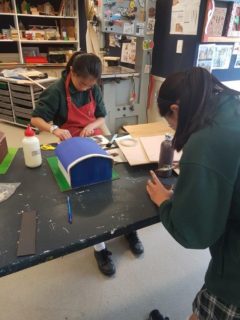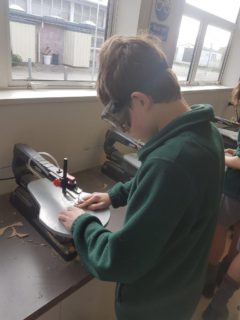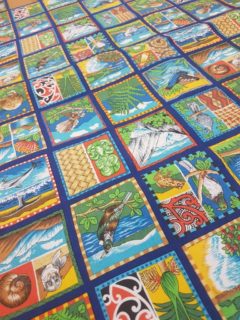by R. Mansfield. Retrieved December 10, 2012 from http://www.goodtoknow.co.uk/family/178775/40-ways-to-entertain-your-children
1. Play a game: Scrap the computer games or gaming consoles for the holidays and use the old-fashioned games. Board games for everyone to join in, build up tension and get their brains working. If that sounds too much like hard work, try some basic card games.
2. Make a scrapbook or try scrapbooking: Ask your children to think of a theme and hand them paper, photos, magazines, glue, glitter and scissors and let them come up with their very own creation. These make memorable presents for everyone and future memorabilia.
3. Bake a cake: Children can be taught the art of cake-making, and they’ll also be improving their number skills when weighing out the ingredients and learning how to follow instructions by using the recipe. Make sure they wear an apron and wash their hands before and after and please steer clear of sharp knives. This could become a passion like Jamie Oliver.
4. Visit a museum or art gallery: Even if you’re not that interested, you see places in a different light. Paintings and historical artefacts look totally different to children and you may discover interests you never knew they had.
6. Have a DVD night: Make the evening into a bit of a home cinema event. Suggest a favourite film or pick a family movie that you can all watch together. Make it special, close the curtains and turn off the lights, as if you’re in a proper cinema. Organise snacks. Arrange the furniture and settle down for an evening of fun together.
7. Go on a treasure hunt: If you’re being inventive, you could always make pretend pirate maps, get your children to dress up and make it a realistic hunt for ‘buried’ treasure.
8. Go for a walk.
9. Painting: Break out the paper and poster paints and cover the table with newspaper. You don’t just have to use just brushes – use different things to make pictures. Finger painting is great fun; or slice some potatoes in half, cut out faces or other patterns and then dip them in paint and stamp onto paper. (Good for present wrapping).
10. Dressing up: Children love to dress up and it can make the shyest child come alive. Check the bottom drawer for old clothes and other accessories that you or your partner no longer use. These can be anything from old glasses, belts, gloves, bags, coats, fancy-dress outfits, or scarves. Try to invent some stories to go with the clothes. If you haven’t yet got enough clothes, see if there are old baby clothes and get teddies or other toy animals dressed up. Think that this is how Peter Jackson started out and now look where he is! Get the video camera to record the process.
11. Teach cross-stitch.
12. Make a worm farm: After it rains is the best time to hunt for worms. Once you’ve collected five or so, put them in an ice-cream tub with some soil. Make holes in the top so they can breathe. Then you’ll be able to feed the worms food scraps, including finely broken up eggshells and vegetable peelings. The worms will make great compost, which can be used in your garden or indoor pot plants.
13. Become a model maker.
14. Check the local library.
15. Visit grandparents or great grand parents: Why not get them talking about what it was like when they were children. What did they do to pass the time? What were their favourite toys? Did they watch TV? They’ll be surprised by the answers. Where did they live? And so on.
16. Go bowling.
17. Make a map of the local neighbourhood imagining they’re a bird in the sky looking down. Not as easy as it sounds.
18. Have a karaoke competition with the neighbours.
19. Learn origami: The art of paper-folding easy to do and is cheap. You can fold a sheet of paper into pretty much anything, as long as you’ve got a pattern. Origami.com is a great place to start.
21. Take them ice-skating.
22. Teach them to knit: Don’t know how to knit yourself? This site should provide you with some inspiration. Try http://www.craftyarncouncil.com/learn-home.html
23. Make a miniature garden: Don’t recyle the take away plastic trays just yet. You’ll need tape or glue to stick the rocks and twigs in. Add some toy figures to make it more lifelike or use sand to make a beach scene.
24. Make a family tree: How much do your children know about their family? Do they know anything about your parents’ parents? Not only is drawing family trees fun, but it also teaches them about history. This may end up being a life long passion! You may unearth some really interesting stories about the family that you never knew. For a starting point, read our step-by-step guide to building a family tree onhttp://www.goodtoknow.co.uk/family/226312/Step-by-step-guide-to-building-your-family-tree




















